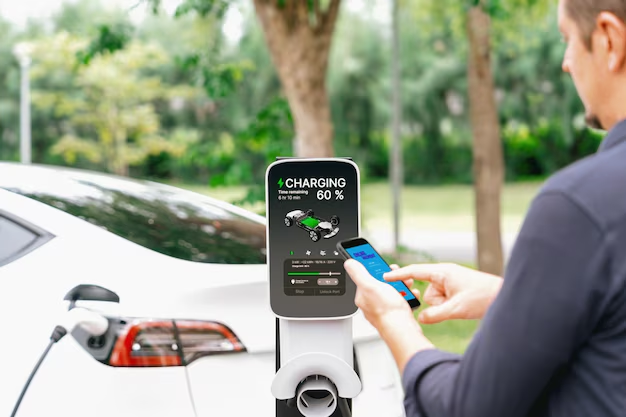Unlocking the $7,500 EV Tax Credit: A Comprehensive Guide
The electric vehicle (EV) revolution is here, reshaping how we think about transportation and sustainability. But did you know that buying an EV could also bring you financial perks via tax credits? The $7,500 EV tax credit is a valuable incentive designed to make electric cars more accessible. This guide will walk you through how to claim this tax credit, helping you make the most of your EV purchase.
⚡ What is the $7,500 EV Tax Credit?
The $7,500 EV tax credit is a federal incentive in the United States aimed at encouraging the adoption of electric vehicles. It's part of a broader initiative to reduce carbon emissions and promote cleaner fuel technologies.
How Does It Work?
When you purchase a qualifying electric vehicle, you may be eligible for a non-refundable tax credit up to $7,500. This means you can reduce what you owe in federal income tax by this amount, which can be a significant saving on your tax bill.
Eligibility Criteria
To qualify for the full $7,500 credit:
- Vehicle Type: It must be a new, qualifying electric vehicle.
- Battery Capacity: The vehicle should have a battery capacity of at least 4 kWh.
- Seller Certification: The manufacturer must certify that the car is eligible for the tax credit.
- Purchase Date: Verify that the credit applies to your purchase year, as credits change over time.
It's important to note that these credits are phased out once a manufacturer sells a certain number of eligible vehicles. Always check if the specific make and model you're buying still qualifies.
🔍 Understanding the Tax Credit Process
Step 1: Check Your Vehicle's Eligibility
Before you purchase an EV, confirm that the vehicle qualifies for the tax credit. Not all EVs qualify due to battery size or manufacturer limitations. A dealership or direct seller will usually provide this information, although you'll want to verify it through federal resources or trusted automotive platforms.
Step 2: Make the Purchase
Once you've identified an eligible vehicle, you can proceed to purchase it. Ensure that the seller provides all necessary documentation, often including a certification that the vehicle qualifies for the tax credit.
Step 3: Gather Required Documentation
You'll need:
- Purchase Agreement: Proof of purchase including price, date, and vehicle identification number (VIN).
- Manufacturer Certification: Official documentation or confirmation from the carmaker that your vehicle qualifies.
Step 4: Claim the Credit on Your Tax Return
When it's time to file your federal taxes, you'll need to complete Form 8936, "Qualified Plug-in Electric Drive Motor Vehicle Credit," to claim your credit. Attach this form to your tax return and retain all documentation in case of an audit.
Using the $7,500 Tax Credit
The credit can only be used against the taxes you owe. If your tax liability is less than $7,500, you won’t receive the credit difference as a refund. It's purely a reduction in tax owed, not a rebate.
📈 Navigating Related Tax Aspects
State Incentives and Rebates
Beyond the federal tax credit, many states offer additional incentives. These can include:
- State tax credits or rebates
- Local utility incentives
- Reduced registration fees
- Access to carpool lanes
Lease Considerations
If you're leasing an EV, the leasing company typically claims the tax credit. They may pass on savings to you through lower lease payments. Always confirm with the lessor how the credit will be handled in your lease agreement.
🚗 Future of EV Tax Credits
The structure of EV tax credits is periodically assessed by lawmakers to adapt to evolving market conditions and environmental goals. Keep an eye on legislative updates, as they can impact the availability and size of credits.
🌟 Quick Reference: EV Tax Credit Tips
Here's a handy summary to help navigate the EV tax credit:
- 🔎 Check Eligibility: Always verify vehicle eligibility before purchasing.
- 📄 Documentation: Keep all purchase and certification documents.
- 🗓️ Timing: Ensure the credit applies for your purchase date.
- 💰 State Bonus: Look for additional state/local incentives.
- 🔄 Lease Terms: Confirm credit handling if leasing.
💡 Conclusion: Making the Most of Your EV Purchase
Investing in an electric vehicle can be beneficial not just for the environment but also for your wallet through the federal tax credit. With proper preparation and understanding of the requirements, you can seamlessly claim the $7,500 EV tax credit and explore additional incentives. As electric vehicle technology continues to evolve, staying informed will ensure you maximize the financial benefits alongside the environmental ones. Dive into the world of EVs, and let your next car choice drive both change and savings.

Related Topics
- Are Credit Card Fees Tax Deductible
- Are We Getting Child Tax Credit Payments In 2024
- Can I Pay Federal Taxes With a Credit Card
- Can I Pay My Taxes On a Credit Card
- Can I Pay My Taxes With a Credit Card
- Can I Pay My Taxes With My Credit Card
- Can I Pay Property Tax With Credit Card
- Can I Pay Taxes On a Credit Card
- Can I Pay Taxes With Credit Card
- Can You Claim Child Tax Credit With No Income